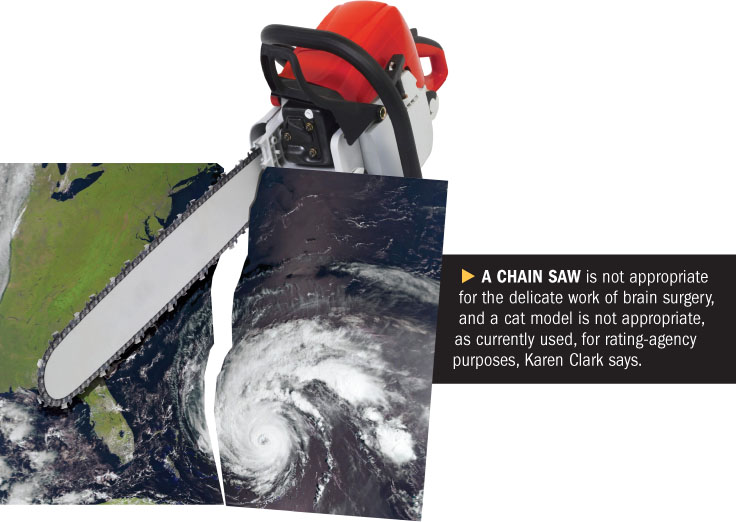Weinkle uncovers some eyebrow raising factiods, such as the fact that the estimated probability of a Category 5 hurricane hitting Florida has apparently increased from previous model filings in several models by 100%. She also shows that across five different models, the estimated cost of a Category 5 storm in Florida ranges from $18 billion to $146 billion.In America's deep south, a region not so far away, hides a new foe threatening otherwise intelligent people's ability to decide. The Louisiana Insurance Commissioner, Jim Donelone, has rung the alarm putting homeowners on alert of "The looming threat of the new cat model, RMS 11". This is the newest addition in the catastrophe model rogue gallery challenging the gallant efforts of state insurance regulating offices. The kryptonite in their coding is the incredible capacity to produce scientifically supported uncertainty thereby weakening the ability to control rates by politically hopeful insurance commissioners everywhere. A past episode between dueling regulating powers and risk predicting machinery demonstrated the societal cost inflicted by these dastardly foes creating uncertainty whenever plugged into a wall. In 2006, RMS rolled out an arbitrary change to their trusty hurricane catastrophe model in RiskLink 6.0, costing Florida homeowners $82 billion. Stay tuned to state regulating offices for the latest updates on the battle between man and machine...
In the mean time, let's take a closer look at these new trade secret rascals...
Based on these numbers, Weinkle calls the catastrophe models tools that create uncertainties and makes the nonobvious point that decisions about risk are actually decisions about modeled risk -- which may or may not be the same thing:
Together, these models create a great deal of uncertainty about the risk being insured against. In the world of insurance, uncertainty about the risk is risk in and of itself. If uncertainty increases, then the cost will too and vice versa. So, a reasonable question to ask would be, "Has the modeled risk changed?"Not surprisingly, catastrophe models have faced some criticism, such as found in this recent news article from Louisiana:
Catastrophe models are controversial. Proponents say they bring science to underwriting and synthesize the latest understanding of storms and climate change to insurers. Opponents say they're gee-whiz black boxes that manufacture instant justification for high rates for insurers.The problem with catastrophe models is not that they lack value (they are actually extremely powerful and potentially useful tools), it is just very hard to assess what that value is (e.g., PDF), and their black box nature makes such assessments extremely difficult. The lack of an industry-wide evaluation capability, strong hints of conflict of interest and the defensive nature of some of the cat modelers makes the issue a mine field of bad decisions for businesses and governments alike.
